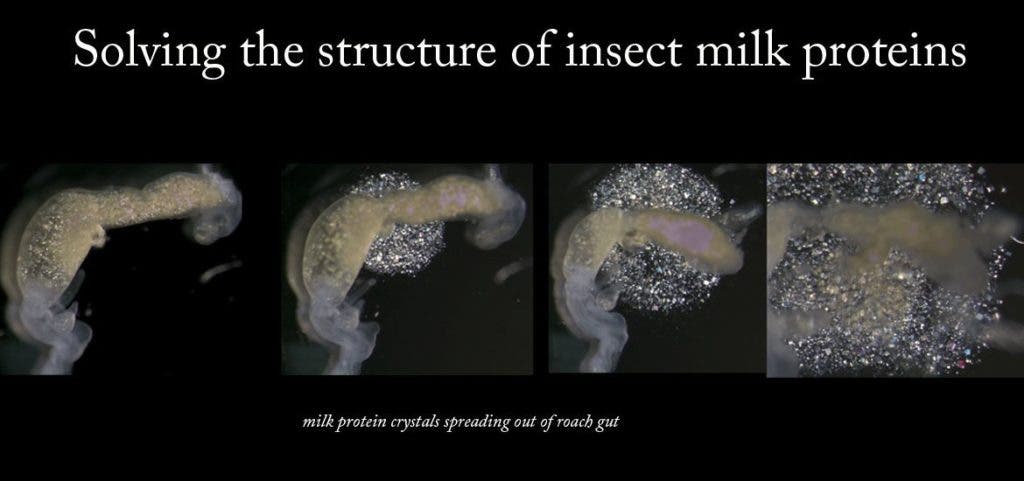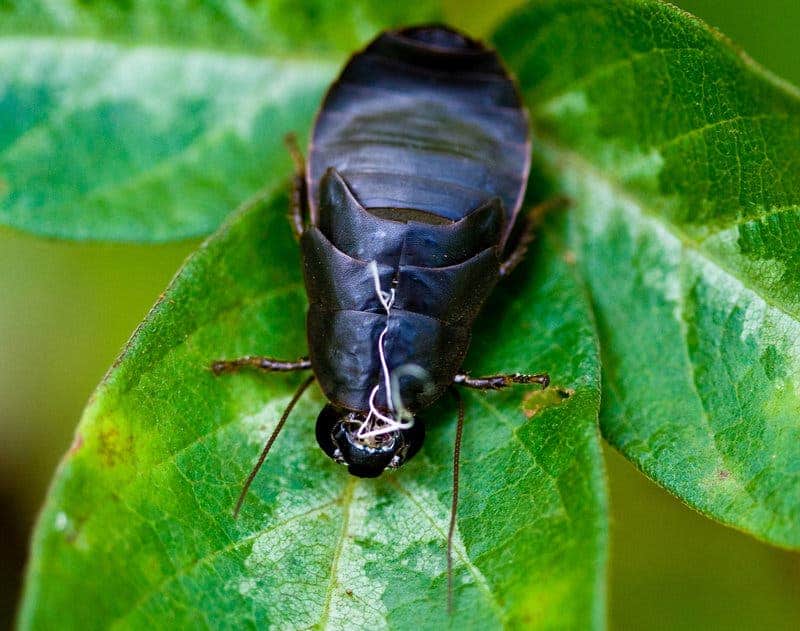Move over almond milk and avocado, there’s a new superfood in town: cockroach milk. Wait a second — don’t roll your eyes just yet, because this is actually a serious possibility which researchers and some companies are investigating. Apparently, cockroach ‘milk’, or rather the liquid postnatal secretion of a certain cockroach species, is one of the most nutritious substances that we know of. Pound for pound, cockroach milk reportedly contains three times the energy of an equivalent mass of dairy milk.
The first hints that cockroach milk is worth our attention came in 2016, when an international team of researchers reported the first study of protein crystals sourced from the Pacific beetle cockroach (Diploptera punctata). This is a unique cockroach, in the sense that its the only viviparous roach that scientists know of. Like humans, the young are directly nourished inside the womb by the mother before they are born. So, while its relatives lay eggs, the Pacific beetle cockroach gives birth to live young.
Of course, that doesn’t mean that this cockroach has nipples. That would be odd. Instead, the milk is obtained by opening an embryonic beetle roach, whose guts will spill out nutrient-rich milk crystals that shimmer like glitter.
“Diploptera punctata is the only known viviparous cockroach, an evolutionarily advanced condition in which the eggs have little yolk, but the developing offspring are nourished directly by the mother from the brood sac wall. Viviparity enhances larval development, because the time to reproductive maturity is substantially reduced in D. punctata relative to ovoviviparous species,” wrote the researchers in their study.
Nevertheless, the liquid secretion, which we’ll just call milk for the sake of simplification, is super nutritious, being rich in proteins, fats, and sugars. An analysis of the protein sequences showed that they have all the essential amino acids.

Since the study was first published, some people have taken note and are currently experimenting with ways to turn cockroach milk into food for human consumption. Gourmet Grub, a South African ice cream company, is one of the important companies giving cockroach milk serious consideration. Their solution is called “entomilk”, which is sourced from sustainably farmed insects. Gourmet Grub claims that it may be possible to harvest entomilk in a far more environmentally friendly manner than the traditional farming of dairy cows.
There are a couple of hurdles before this can happen. Firstly, scientists need to prove that cockroach milk is safe for human consumption, something which studies in the future will address. Secondly, milking cockroaches is tough work. Ten cockroaches produce only half a milliliter of product, and the harvesting process itself isn’t easy. As such, this might end up being a pretty expensive product, although even a sprinkle of cockroach milk in protein drinks could still be good. Some researchers are currently experimenting with genetically modified yeast — which is far easier to grow and harvest — to produce the same milk as beetle roaches.
But at the end of the day, the biggest obstacle in the face of widespread cockroach milk adoption is convincing people that it’s not a gross thing (provided scientists prove it’s safe). The taste itself isn’t anything special, confided Subramanian Ramaswamy, one of the researchers, to the Washington Post.
So, any takers? Anyone?










